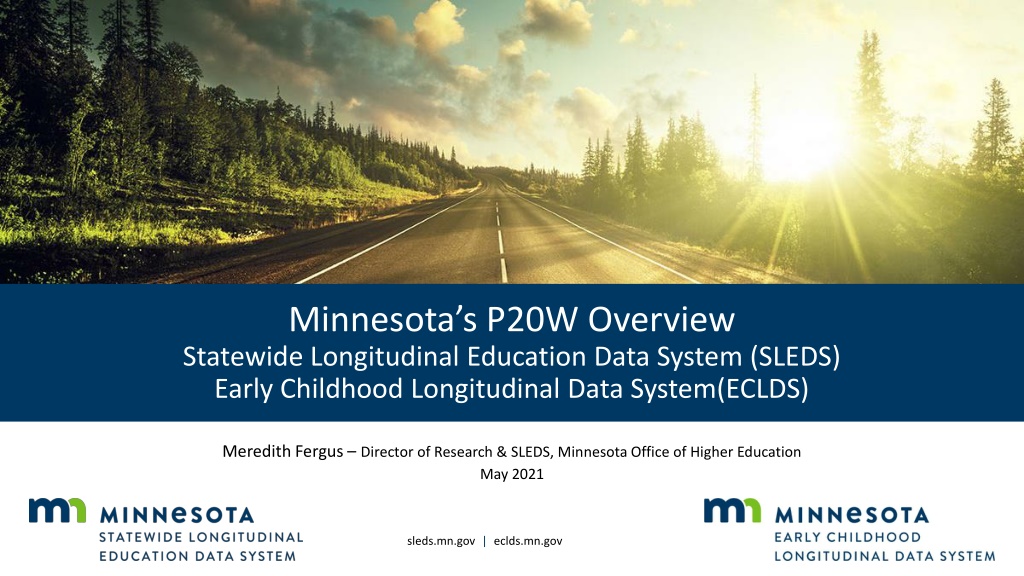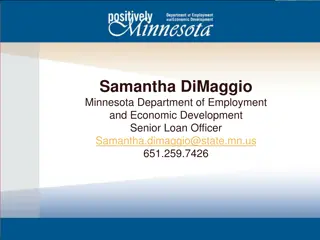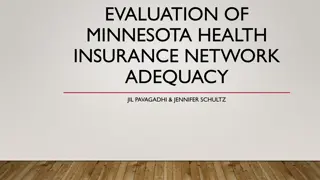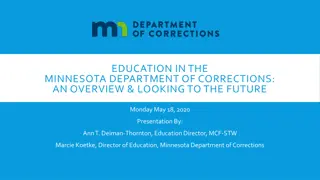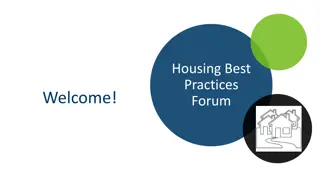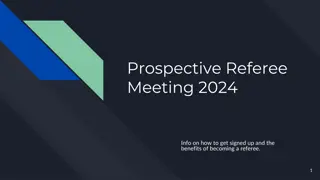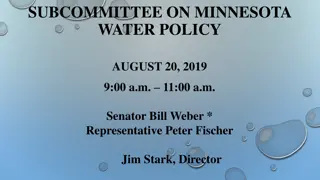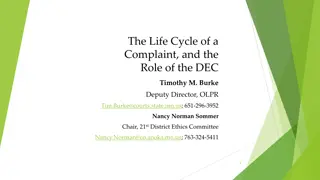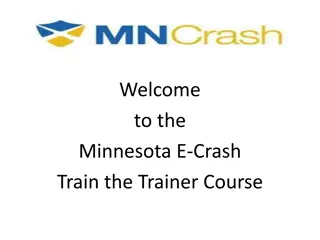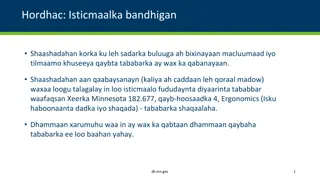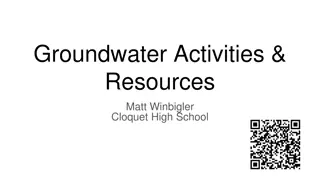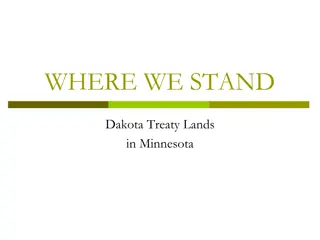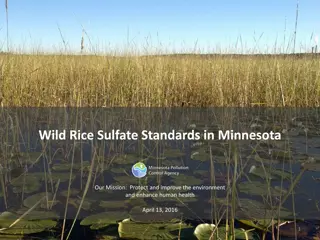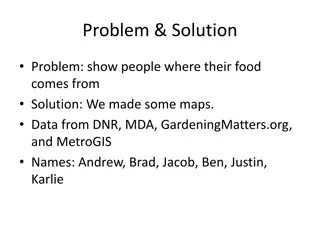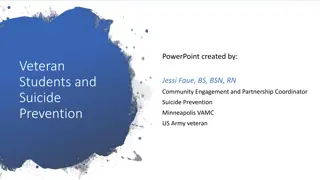Minnesota P20W Data System Overview
Statewide Longitudinal Education Data System (SLEDS) and Early Childhood Longitudinal Data System (ECLDS) in Minnesota manage data related to individuals' education, work, health, and incarceration. The vision of SLEDS and ECLDS is to provide valuable insights for successful outcomes in education and work, while ensuring data privacy and stakeholder engagement. Legislative authority for these systems lies under Minn. Stat. 127A.70 Subd.2(b).
Download Presentation

Please find below an Image/Link to download the presentation.
The content on the website is provided AS IS for your information and personal use only. It may not be sold, licensed, or shared on other websites without obtaining consent from the author.If you encounter any issues during the download, it is possible that the publisher has removed the file from their server.
You are allowed to download the files provided on this website for personal or commercial use, subject to the condition that they are used lawfully. All files are the property of their respective owners.
The content on the website is provided AS IS for your information and personal use only. It may not be sold, licensed, or shared on other websites without obtaining consent from the author.
E N D
Presentation Transcript
Minnesotas P20W Overview Statewide Longitudinal Education Data System (SLEDS) Early Childhood Longitudinal Data System(ECLDS) Meredith Fergus Director of Research & SLEDS, Minnesota Office of Higher Education May 2021 sleds.mn.gov | eclds.mn.gov
Data P20W (SLEDS & ECLDS) 6 state agencies (health, human services, corrections, K12 education, higher education, workforce), 1 state board (teacher licensing), and 1 county Comprised of 159 individual tables of data Includes data we receive/buy from 4 vendors (ACT, College Board, GED, National Student Clearinghouse) Data is retrospective and is loaded twice a year (June and November) Data is retrospective because providers report data to our agencies retrospectively, and data are cleaned and finalized which increases the time between data receipt and data load to SLEDS and ECLDS. 2/27/2025 sleds.mn.gov | eclds.mn.gov 2
Data P20W (SLEDS & ECLDS) manages data related to: Persons born in MN; Persons receiving services or funding related to health, basic needs, education, or work in MN; Persons incarcerated in MN; Persons working in or licensed to work in MN; and Organizations involved in health, basic needs, education, work, or incarceration Unique persons are identified across sources based on set rules using a probabilistic matching algorithm 29 million person records 22 million once de-duplicated within data source 9.2 million once de-duplicated across data sources 2/27/2025 sleds.mn.gov | eclds.mn.gov 3
Vision and future SLEDS: What is our vision? SLEDS was created to identify the most viable pathways for individuals in achieving successful outcomes in education and work. ECLDS: What is our vision? ECLDS is intended to facilitate Minnesota s ability to answer policy and research questions about outcomes for young children over the life course. SLEDS will: Be responsive to stakeholders by providing an array of high quality reports and data products that meet identified needs in a timely manner, Maximize stakeholder engagement and data use, and Incorporate efficient data management processes serving as a model cross-agency data system project. ECLDS will: Make available public reports that include de- identified, aggregated data, Meet the needs of stakeholders by including data elements to respond to relevant research and policy questions and reporting needs, Keep private data safe and only allow those authorized access to such data, and Encourage cross-agency collaborations. 4
Legislative authority Minn.Stat. 127A.70 Subd. 2(b) Under the direction of the P-20 Education Partnership Statewide Longitudinal Education Data System Governance Committee, the Office of Higher Education and the Departments of Education and Employment and Economic Development shall improve and expand the Statewide Longitudinal Education Data System (SLEDS) and the Early Childhood Longitudinal Data System (ECLDS) to provide policymakers, education and workforce leaders, researchers, and members of the public with data, research, and reports to: (1) expand reporting on students' educational outcomes for diverse student populations; (2) evaluate the effectiveness of early care, educational, and workforce programs; and (3) evaluate the relationships among early care, education, and workforce outcomes. To the extent possible under federal and state law, research and reports should be accessible to the public on the Internet, and disaggregated by demographic characteristics, organization or organization characteristics, and geography. 2/27/2025 sleds.mn.gov | eclds.mn.gov 5
Research agenda The 4Ps of the SLEDS research agenda Pathways: The movement of individuals between K-12 / Higher Education / Workforce / Corrections ECLDS broad policy questions What do we know about the children participating in Minnesota s public early care and education programs? Progress: The benchmarks or transition points individuals meet or fail to meet For example: Demographics, disability, program combinations Predictors: The characteristics, patterns, or commonalities that help explain which individuals succeed and which do not What is the status of children after participating in public early care and education programs? Performance: The alignment of education and workforce for individual success For example: Special education use, attendance in the early grades, third grade test scores 2/27/2025 sleds.mn.gov | eclds.mn.gov 6
SLEDS data requests 83 approved data requests Office of Higher Education 22 requests Research/Evaluation Contractors 19 Minnesota Department of Education 11 Colleges (internal planning) 8 Faculty & Graduate Students 7 High Schools 5 DEED 4 (Labor Market Information has a broader request covering multiple studies) Other public entity 3 Educational program - 1 Topics: a sample of research completed State & Federal reporting: college going, developmental education, career & technical education, adult basic education Impact of policy: GRAD exam, Minneapolis minimum wage, participation in dual credit & college enrollment Setting policy: Establishing and validating K-12 Assessment benchmarks for use by Minnesota State in developmental education placement Evaluation of program outcomes: Northside Achievement Zone, Career Academies, Ramp Up to Readiness, financial aid, Achieve Mpls Interaction of education and workforce supply/demand: racial gaps in employment, post-college employment, supply of rural health care providers Postsecondary outcomes for targeted populations: students with disabilities, Hmong students, homeless students, incarcerated youth, rural students, American Indian students Longitudinal studies: How many 9th graders from 2006 have achieved a family sustaining wage?; What happens to at-risk students after high school? Excludes data available to colleges and high schools via secured report (pre-packaged data mart with select variables) 7
